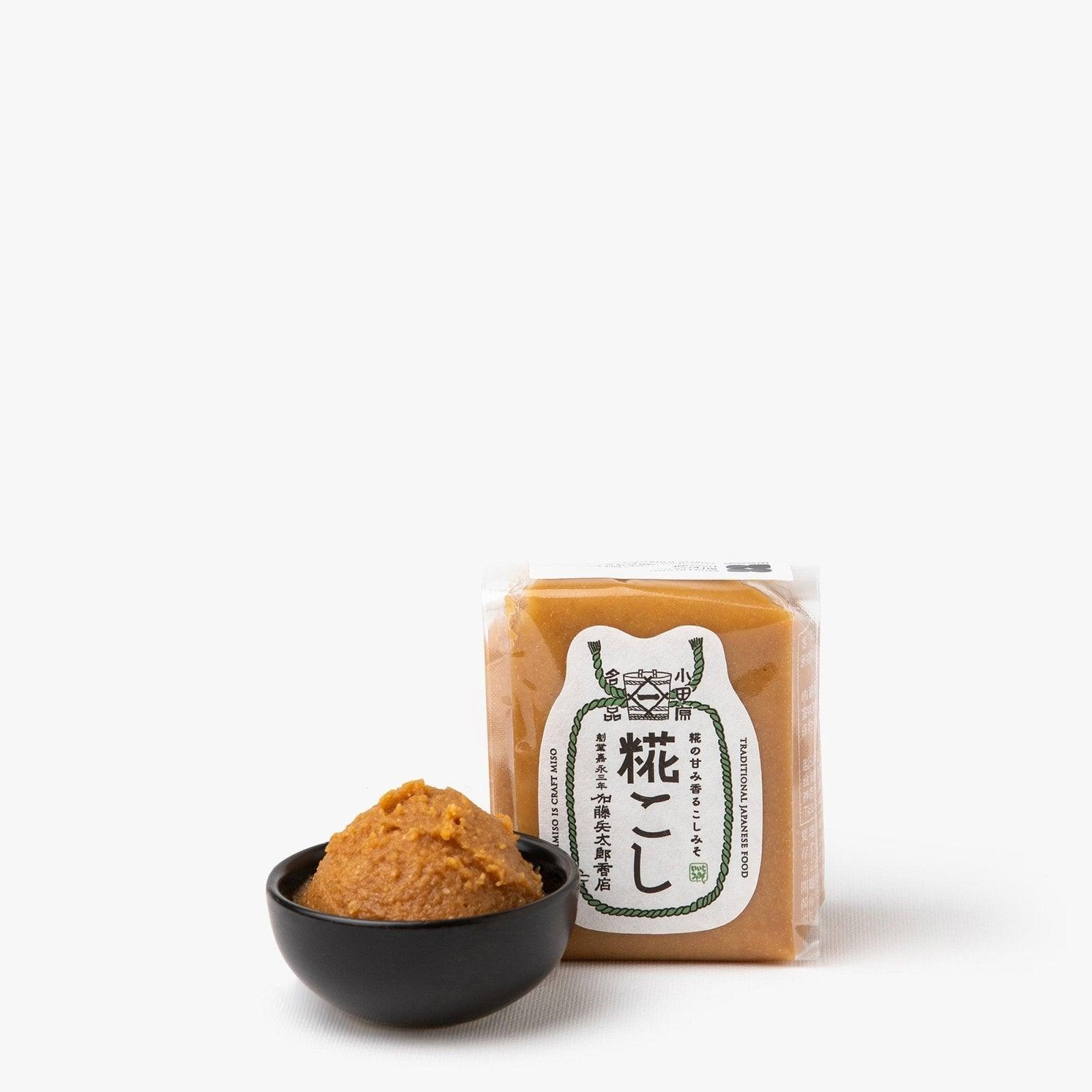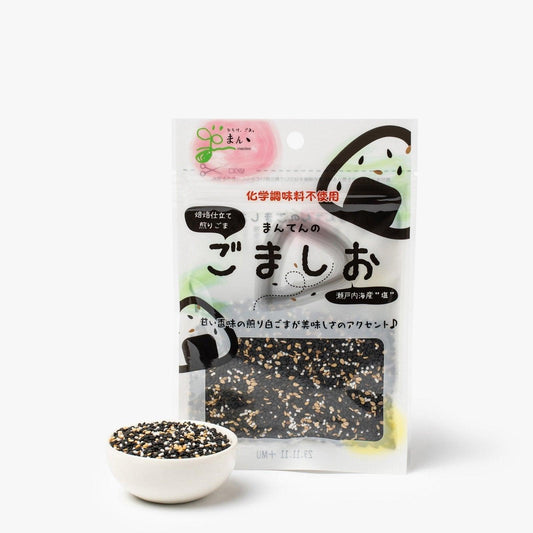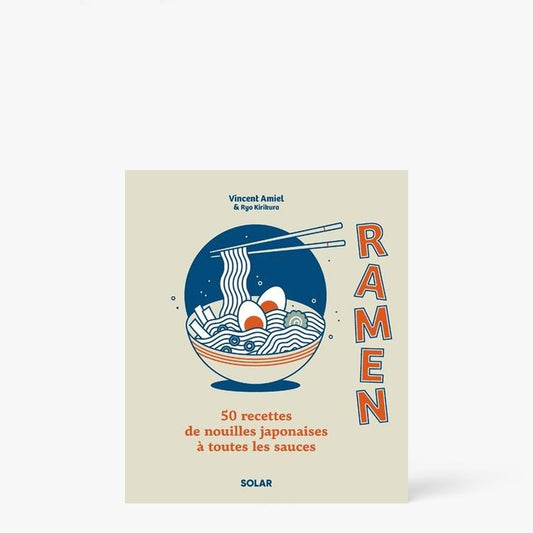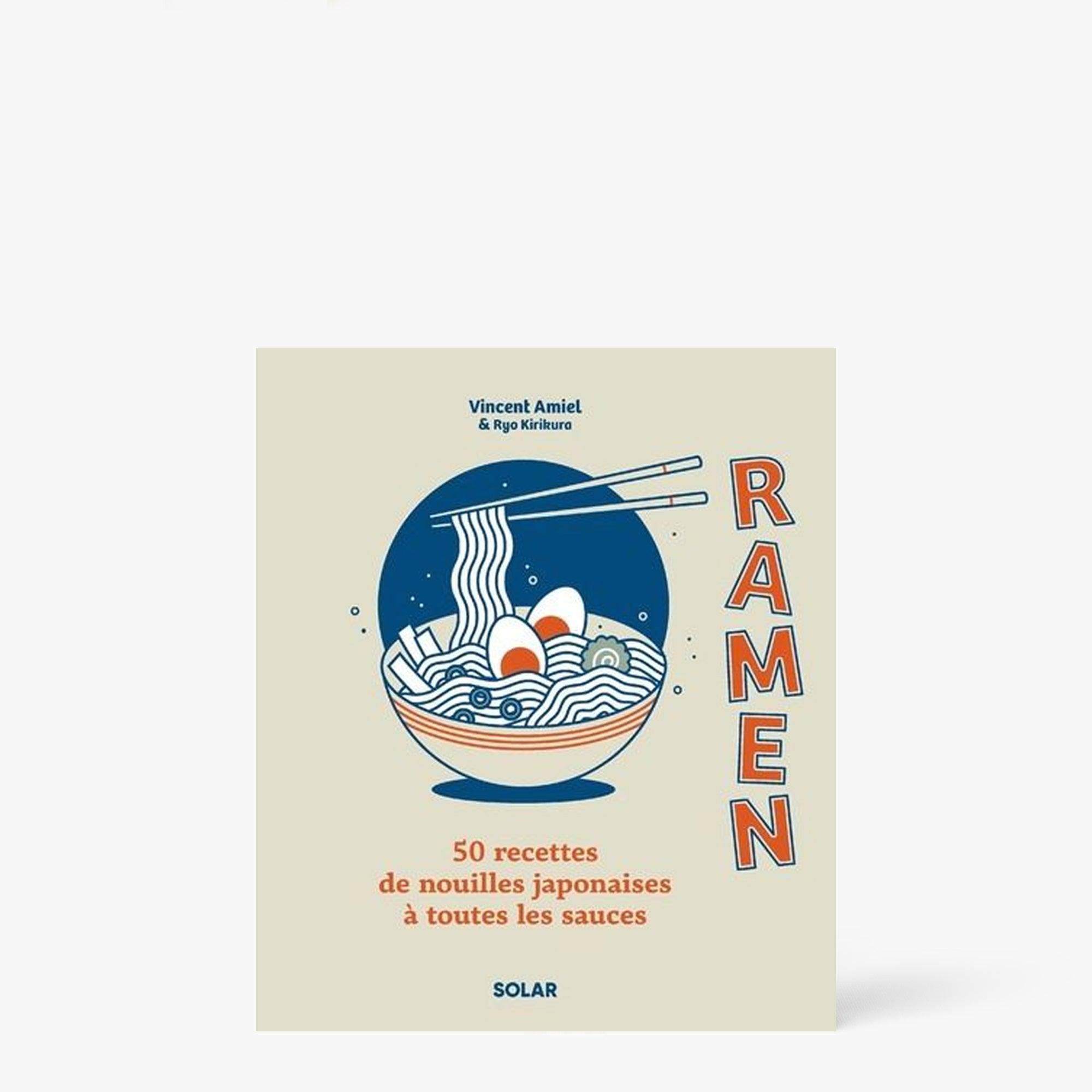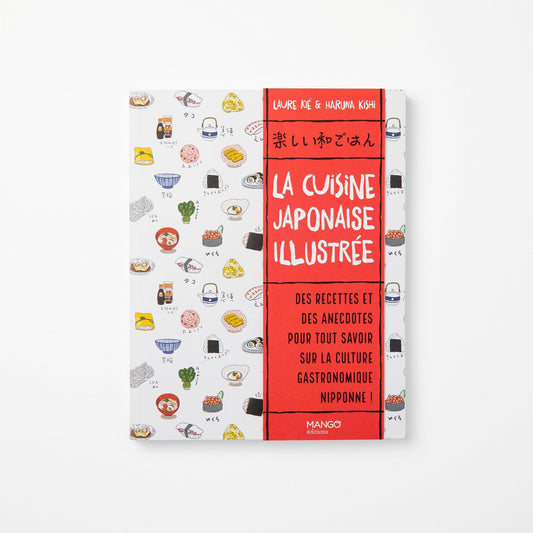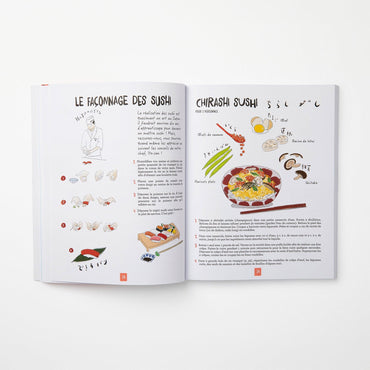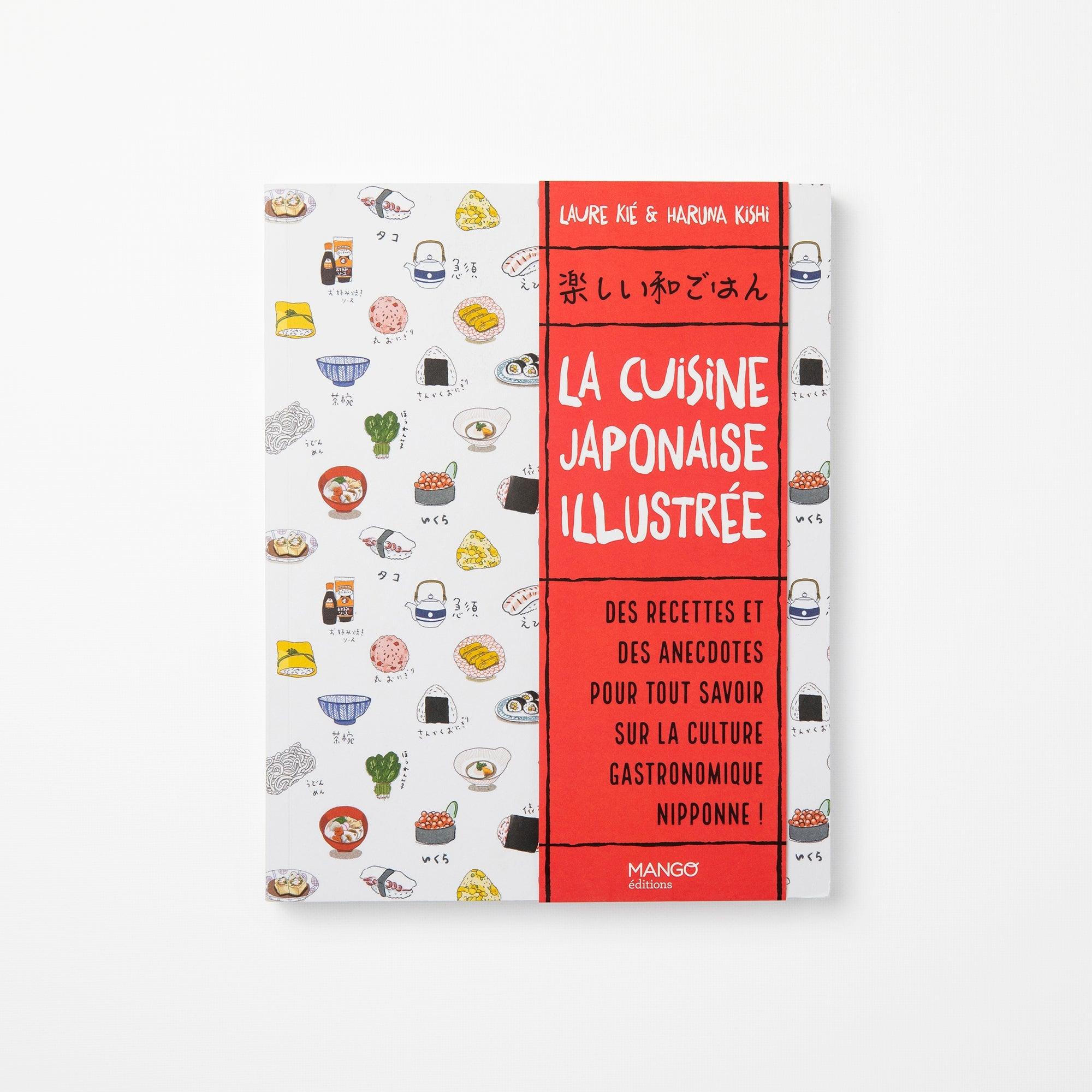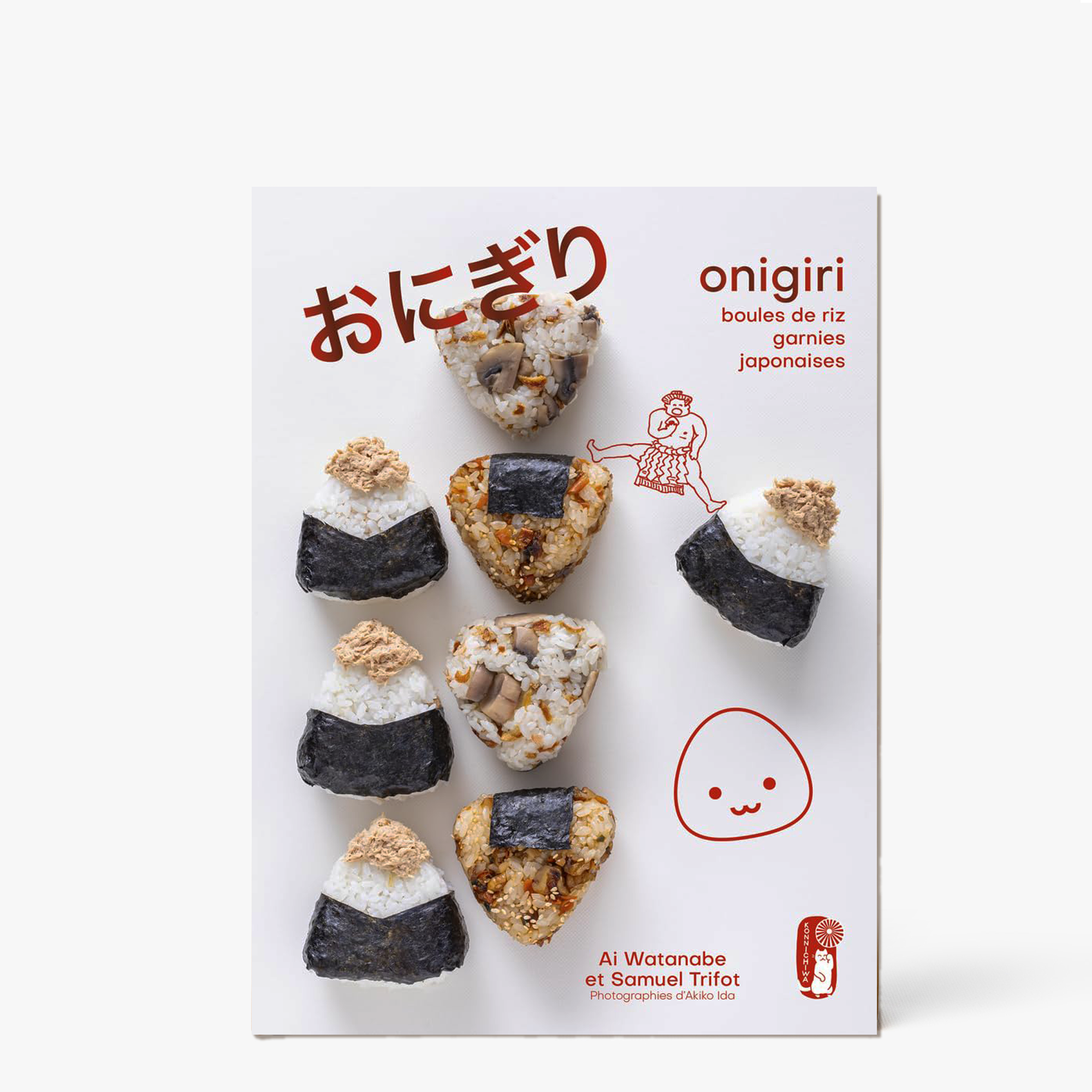Authentic homemade gyoza recipe
Rated 3.3 stars by 79 users.
Portion
5
Preparation time
15 minutes
Cooking time
10 minutes
Gyoza, savory little Japanese ravioli, are a popular dish, as much for their simplicity as for their delicious taste. Originally from China, gyoza have been adopted and adapted by the Japanese, becoming an essential specialty of Japanese cuisine. Traditionally stuffed with minced pork, cabbage and green onions, and seasoned with garlic and ginger, they are fried to perfection and then steamed, offering a texture that's both crispy and chewy. This recipe uses a technique that gives the thin, jagged crust characteristic of hanetsuki gyoza (gyoza with "wings") found in Japan.
iRASSHAi

Ingredients
- 200 g ground pork
- 150 g Chinese cabbage, thinly sliced
- 50 g Chinese chives, minced
- 50 g green onions, thinly sliced
-
1 clove garlic, minced
-
1 piece ginger (about 2 cm), minced
- 1 teaspoon salt (for the cabbage)
- 1 tablespoon soy sauce
-
1 tablespoon sake (or mirin, dry white wine)
- 1 teaspoon sugar
-
1 teaspoon sesame oil
-
1 teaspoon potato starch
- 200 g wheat flour
- 100 ml warm water
-
1 pinch salt
-
1 tablespoon corn or potato starch
- 1 teaspoon flour
- 60 ml water
- A little vegetable oil for the pan
- 4 tablespoons soy sauce
-
2 tablespoons rice vinegar
-
1 teaspoon sesame oil
-
Optional: a few drops of hot sauce (chili sauce, etc.) or sesame seeds
-
Optional: gyoza mould
For the stuffing
Stuffing seasoning :
For the ravioli dough
For cooking
For the dipping sauce
Instructions
Preparing the dough
- In a large bowl, combine the flour and salt.
- Add the warm water a little at a time, stirring until a paste forms.
- Transfer the dough to a lightly floured work surface and knead for 10 minutes until smooth and elastic.
- Cover the dough with a damp cloth and leave to rest for at least 30 minutes.
Prepare the stuffing
- In a bowl, sprinkle the chopped cabbage with 1 teaspoon salt. Leave to stand for 10 minutes.
- When the cabbage is soft, squeeze it firmly by hand to extract as much water as possible, then discard.
- In another bowl, mix the wrung-out cabbage with the ground pork, chives, green onions, garlic and ginger.
- Add all the ingredients for seasoning the stuffing (soy sauce, sake, sugar, sesame oil and potato starch). Mix well.
- Leave the stuffing in the fridge for 15 minutes to allow the flavours to develop.
Shaping the gyoza
- Roll out the dough and cut out circles about 8 cm in diameter (you can also buy ready-to-use gyoza dough rounds).
- Place a round of dough in the palm of your hand and spoon about 1 teaspoon of filling into the center. (A ravioli mold can also make this step easier).
- Lightly moisten the edges of the dough with water. Fold the round in half to form a semicircle and pinch the edges to seal.
- For a more traditional look, you can make small regular pleats around the edges for a nice finish.
Cook the gyoza
- In a small bowl, mix the cornstarch, flour and 60 ml water until smooth and lump-free.
- Heat a little vegetable oil in a frying pan over medium heat. Arrange the gyoza without touching.
- Brown for 2 to 3 minutes, until the underside is crisp.
- Pour the water-starch mixture into the pan. Cover immediately and steam for around 5-6 minutes, until all the liquid has evaporated. This technique creates the crisp, thin base characteristic of "hanetsuki" (winged) gyoza.
- Once the water has evaporated, remove the lid and leave the base to crisp for a further 1-2 minutes over medium heat.
- To serve, place a large plate on the frying pan and turn it over quickly so that the gyoza are placed crisp-side up.
Dipping sauce
- Mix all the ingredients for the dipping sauce in a small bowl: soy sauce, rice vinegar and sesame oil. Add hot sauce or sesame seeds if desired.
- Serve the gyoza warm with this sauce and enjoy!
Recipe notes
Although gyoza are now an icon of Japanese cuisine, their origins lie in China. Originally called jiaozi, these little delicacies were brought back to Japan by Japanese soldiers during the Second World War, after their encounter with this Chinese specialty. Once in Japan, gyoza were adapted and modified to suit the unique tastes of Japanese cuisine, becoming the culinary icon we know today.
The different ways to cook gyoza
There are several ways to prepare these ravioli, each with its own unique texture and taste:
Yaki-gyoza: The most popular method in Japan, where gyoza are first lightly fried and then steamed to obtain a crispy exterior and juicy interior.
Sui-gyoza: These gyoza are boiled in hot water, giving them a softer texture and a more subtle taste.
Age-gyoza: Completely fried, these gyoza are crispier and offer a crunchier texture that will delight thrill-seekers.
Fun Fact: Giant Gyoza!
Did you know that the largest gyoza ever made measured 1.6 meters? This record was set in China in 2014 to celebrate the lunar year. Although Japan hasn't broken this record, the Japanese love of gyoza is undeniable, with festivals dedicated to the dish in towns like Utsunomiya and Hamamatsu. Gyoza are a culinary icon in Japan!
Gyoza and Prosperity
According to a popular Asian belief, eating gyoza at the start of the year brings prosperity. Their half-moon shape is reminiscent of ancient gold ingots, symbolizing wealth and good fortune. So it's an excellent reason to enjoy these little morsels all year round, and especially during the festive season!
Our product selection for this recipe:
Japanese cooking essentials
-
White miso with koji from Hakone ⋅ Kato Heitaro shoten ⋅ 200g
Regular price 5.50 €Prix promotionnel 5.50 € Regular pricePrice per unit 27.50 € / per kg5.0 / 5.05.0 / 5.05.0
15) 15 opinion
-
White miso ⋅ Kato Heitaro Shoten for iRASSHAi ⋅ 200g
Regular price 5.50 €Prix promotionnel 5.50 € Regular pricePrice per unit 27.50 € / per kg5.0 / 5.05.0 / 5.05.0
13) 13 opinion
-
Roasted black and white sesame seeds with gomashio salt ⋅ Manten ⋅ 30g
Regular price 2.65 €Prix promotionnel 2.65 € Regular pricePrice per unit 88.33 € / per kg4.75 / 5.04.75 / 5.04.75
4) 4 opinion
-
Panko breadcrumbs ⋅ Hanayuki ⋅ 340g
Regular price 8.00 €Prix promotionnel 8.00 € Regular pricePrice per unit 23.53 € / per kg4.86 / 5.04.86 / 5.04.86
7) 7 opinion
-
Artisanal balanced soy sauce ⋅ Asarisasuke Shoten ⋅ 500ml
Regular price 6.25 €Prix promotionnel 6.25 € Regular pricePrice per unit 12.50 € / per l5.0 / 5.05.0 / 5.05.0
8) 8 opinion
-
Honmirin ⋅ Takara Shuzo ⋅ 13% ⋅ 500ml
Regular price 9.70 €Prix promotionnel 9.70 € Regular pricePrice per unit 19.40 € / per l4.8 / 5.04.8 / 5.04.8
5) 5 opinion
-
Katsuobushi dried bonito chips ⋅ Makurazaki ⋅ 40g
Regular price 9.50 €Prix promotionnel 9.50 € Regular pricePrice per unit 237.50 € / per kg4.9 / 5.04.9 / 5.04.9
10) 10 opinion
-
Tatsuno Smoked Soy Sauce ⋅ Suehiro Soy Sauce ⋅ 100ml
Regular price 8.10 €Prix promotionnel 8.10 € Regular pricePrice per unit 81.00 € / per l4.86 / 5.04.86 / 5.04.86
7) 7 opinion
Japanese cookery books
-
Book Japanese home cooking, 100 recipes ⋅ Marabout
Regular price 29.00 €Prix promotionnel 29.00 € Regular pricePrice per unit / per -
Book Tokyo, Les recettes ⋅ Marabout
Regular price 10.90 €Prix promotionnel 10.90 € Regular pricePrice per unit / per -
Japanese-style stickers: snacks ⋅ NB
Regular price 5.90 €Prix promotionnel 5.90 € Regular pricePrice per unit / per -
Book Ramen - 50 recipes for Japanese noodles with every sauce ⋅ Solar
Regular price 14.95 €Prix promotionnel 14.95 € Regular pricePrice per unit / per -
Illustrated Japanese cooking book ⋅ Mango Editions
Regular price 13.50 €Prix promotionnel 13.50 € Regular pricePrice per unit / per -
Book Mochi mochis, 40 Japanese sweets ⋅ Editions de la Martinière
Regular price 14.90 €Prix promotionnel 14.90 € Regular pricePrice per unit / per -
Book Izakaya - Japanese bistro cuisine ⋅ Hachette Pratique
Regular price 35.00 €Prix promotionnel 35.00 € Regular pricePrice per unit 100.00 € / per l -
Book Onigiri. Japanese filled rice balls. (New Edition) ⋅ First
Regular price 12.95 €Prix promotionnel 12.95 € Regular pricePrice per unit / per











